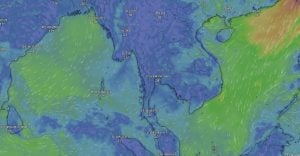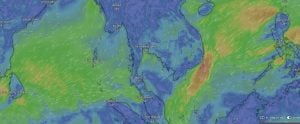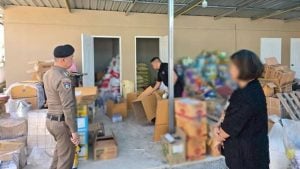Thailand faces drought risk by 2026 amid ongoing flooding concerns
Experts warn of looming dry spell and water scarcity despite receding floodwaters

As Typhoon Vipa diminishes, flooding in parts of northern Thailand is slowly subsiding, but experts warn of potential challenges, including flash floods, water shortages, and the risk of a drought crisis by 2026. The Hydro-Informatics Institute (HII) forecasts a 4 to 9% reduction in rainfall across Thailand during August and September.
These shifts are linked to broader climate change patterns, including the transition from La Niña to neutral or El Niño conditions, which will impact Thailand’s water availability into the next year.
During a public forum titled Water and Climate Alert: Rain Monitor for 2025 Storm Forecast held on July 23, HII analysts highlighted the increasing intensity and unpredictability of extreme weather events. It is anticipated that sudden droughts, driven by fluctuating rainfall, will emerge in the latter half of this year, particularly affecting southern and inland provinces.
Royboon Rassamethes, director of HII, noted that northern provinces such as Chiang Rai, Nan, and Phayao have already experienced heavy rainfall, exceeding 150 millimetres per week in some areas. Despite current flooding, there is growing concern about how quickly water levels might drop, leaving reservoirs understocked and agricultural areas susceptible to drought.
Thailand is projected to face a water shortage of over 4,450 million cubic metres by 2026, with national water reserves falling short of the 12,000 million cubic metres necessary to meet critical demand. Officials are being encouraged to accelerate irrigation system improvements and large-scale water diversion plans to redirect floodwaters into storage pools and high-demand agricultural zones.
ดูโพสต์นี้บน Instagram
Drought risk
Royboon emphasised that “the next four weeks are crucial,” as accumulated rainfall could lead to more flash floods while also concealing the onset of longer-term water scarcity. He urged the public to monitor forecasts updated four times daily and use the ThaiWater application for 48-hour alerts at the subdistrict level.
From November to December, heavier-than-normal rainfall is expected along the western coast of southern Thailand, while eastern provinces will experience typical monsoonal patterns. However, overall rainfall in 2025 is projected to be significantly lower than in 2024, highlighting the need for strategic water management.
The HII is collaborating with public and private partners to improve forecasting accuracy. “By integrating drone technology and advanced monitoring tools, we are upgrading our real-time response capability. These innovations will enhance early warnings and support long-term planning for Thailand’s water security,” Royboon stated.
Meanwhile, the aftermath of Typhoon Vipa continues to impact residents in northern Thailand, particularly in Nan province. Floodwaters have inundated parts of the city for three consecutive days. Although levels are beginning to recede slightly, many areas remain submerged, some as deep as 2 metres.
Roads leading into Nan City, such as the route from Ban Luang district to the Phan Ton intersection in the municipal area, remain underwater.
While some vehicles are now partially visible, flood levels in the economic zone are still over 1 metre deep. Rescue teams are using boats to transport residents in and out of their homes, helping them access essential supplies, as aid cannot reach certain locations, reported Bangkok Post.
Latest Thailand News
Follow The Thaiger on Google News:


























